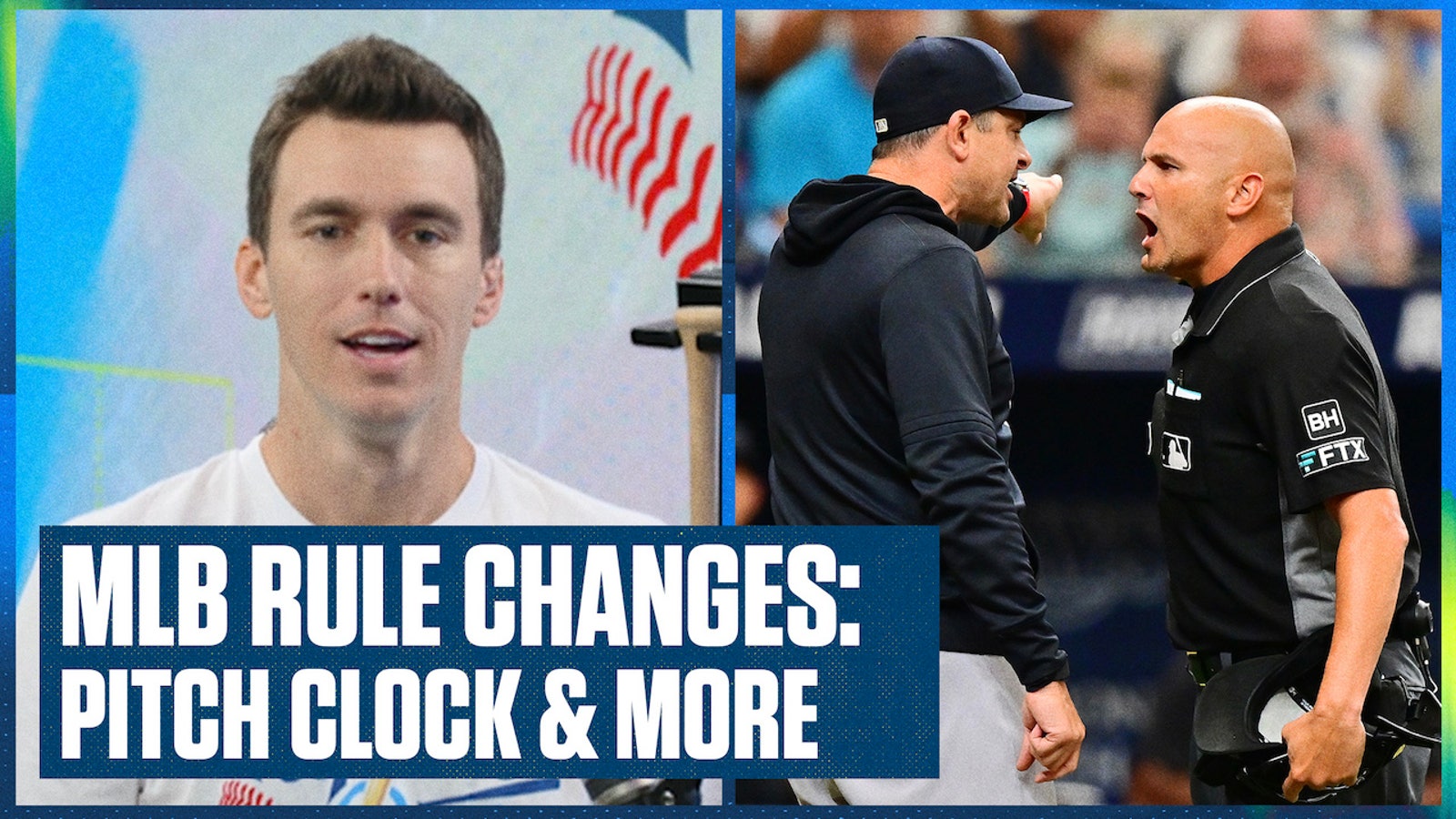
MLB to add pitch clock, ban shifts, enlarge bases: What rule changes mean
By Pedro Moura
FOX Sports MLB Writer
Major League Baseball is taking steps it hopes will significantly speed up the pace of play beginning next season. Maybe more importantly, the league is also instituting rules that should encourage hitters to put more balls into play — and encourage baserunners to attempt more stolen bases.
The Athletic first reported the new rules Thursday. The league has considered such changes for several years, in some cases even predating Rob Manfred's eight-year tenure as commissioner. In his first days in the role, Manfred spoke of a desire to restrict the extreme defensive shift that became ubiquitous after the late-aughts Tampa Bay Rays used it to great effect. That is finally happening: Two infielders must now be on either side of second base when a pitch is delivered, and all four infielders must keep their feet on the infield dirt.
Opinions differ on how drastically such restrictions will change typical gameplay. On one extreme, some in the industry believe hitters have been motivated to swing for the fences because any balls they do not hit in the air have been frequently fielded by shifted defenders. Those approaches seem to have led to more homers, more strikeouts and, of course, less of everything else. There were 33% fewer balls in play in 2020 than in 2005.
On the other extreme, some say that any hitter who cannot adjust to a defensive alignment after years of notice will not be able to make a sudden change to his swing by, say, next season.
But in tandem with the new 15-second pitch clock (20 seconds with runners on), it's likely the shift ban will produce more balls in play — and more hits. Pitchers will lose a few precious seconds to recover between pitches, which could reduce peak velocity. Additionally, they will risk balking if they attempt more than two pickoffs per plate appearance, further reducing recovery time and rendering stolen bases better propositions.
Bigger bases will help in that pursuit, too. This century, entire teams have been attempting fewer stolen bases than top runners did themselves toward the end of last century, after data demonstrated that success rates needed to approach 75% to warrant the effort. The reported base change from 15 to 18 square inches will make the trip between bases slightly shorter.
The pitch clock, though, figures to earn the most attention in the six-month run-up to Opening Day 2023. Many fans have long loved baseball's lack of any timing mechanism. Since it was first introduced in the minor leagues, however, many industry insiders have quickly learned to stop worrying and love the clock. Last season, one MLB scout marveled at the immediate improvement to his quality of life after it began. Quickly, games were ending more than 20 minutes faster on average. His family members, he said, remarked to him unprompted that he seemed happier.
Fans who attend a few games a year — not 150 — might feel differently, especially at first. But players themselves frequently lament the slowing pace of play — while of course contributing to it with their deliberate preparations.
MLB Rule Changes: Pitch clock, modified shift & bigger bases are coming in 2023
These changes are baseball's attempt to appeal to the next generations of fans. They are a little late, but they are also more drastic than many industry insiders expected. Previously, the league had attempted less aggressive changes, such as a three-batter minimum for pitchers and extra-inning limits. Those earned some criticism and less support, and they did not dramatically decrease game times.
Because of the formulation of the 11-person competition committee that voted on the matters Friday, the league has long had the power to unilaterally institute such a sizable shift. Now, after years of debate and experimentation, change is coming. If the minor leagues are any indication, the pace-oriented adjustments will lead to some protest and some confusion. Then they will lead to significantly shorter games with fewer lulls.
It's less clear how immediate and impactful the shift restrictions will be. It's possible that baseball will look dramatically different in 2023, and we will look back on these changes as the beginning of the sport's new paradigm. It's also possible that the potential effects are overstated, that modern players really love swinging for the fences and won't stop now. Time will tell.
Pedro Moura is the national baseball writer for FOX Sports. He previously covered the Dodgers for The Athletic, the Angels and Dodgers for the Orange County Register and L.A. Times, and his alma mater, USC, for ESPN Los Angeles. He is the author of "How to Beat a Broken Game." Follow him on Twitter @pedromoura.











